Welcome to the Amira-Avizo Software Use Case Gallery
Below you will find a collection of use cases of our 3D data visualization and analysis software. These use cases include scientific publications, articles, papers, posters, presentations or even videos that show how Amira-Avizo Software is used to address various scientific and industrial research topics.
Use the Domain selector to filter by main application area, and use the Search box to enter keywords related to specific topics you are interested in.
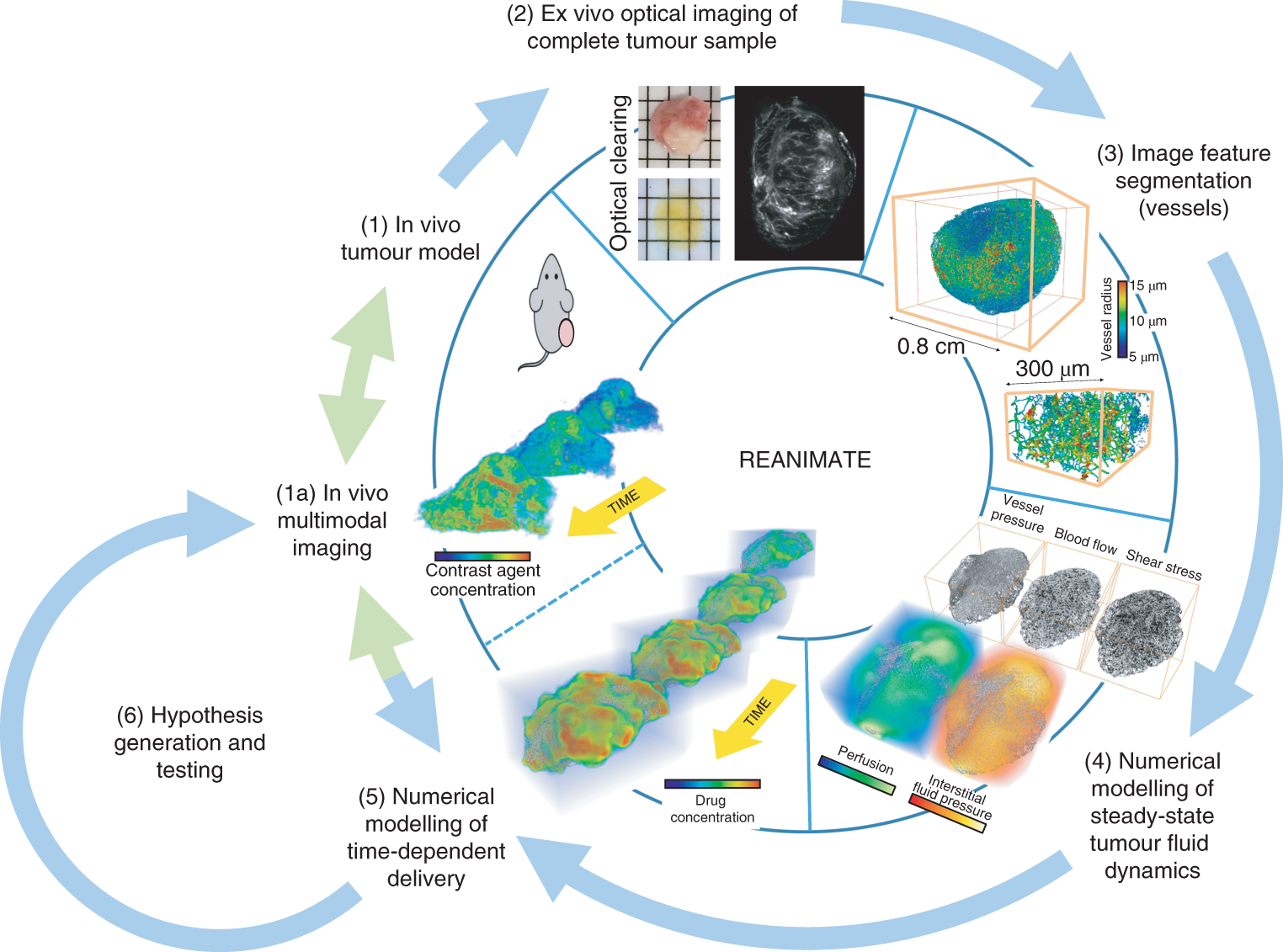
Understanding the uptake of a drug by diseased tissue, and the drug’s subsequent spatiotemporal distribution, are central factors in the development of effective targeted therapies. However, the interaction between the pathophysiology of diseased tissue and individual therapeutic agents can be complex, and can vary across tissue types and across subjects. Here, we show that the combination of mathematical modelling, high-resolution optical imaging of intact and optically cleared tumour tiss... Read more
Angela d’Esposito, Paul W. Sweeney, Morium Ali, Magdy Saleh, Rajiv Ramasawmy, Thomas A. Roberts, Giulia Agliardi, Adrien Desjardins, Mark F. Lythgoe, R. Barbara Pedley, Rebecca Shipley and Simon Walker-Samuel
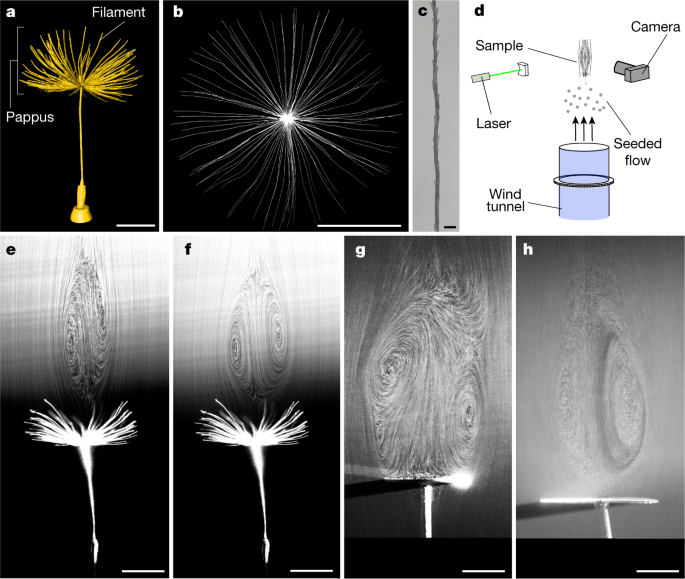
A separated vortex ring underlies the flight of the dandelion
Wind-dispersed plants have evolved ingenious ways to lift their seeds. The common dandelion uses a bundle of drag-enhancing bristles (the pappus) that helps to keep their seeds aloft. This passive flight mechanism is highly effective, enabling seed dispersal over formidable distances; however, the physics underpinning pappus-mediated flight remains unresolved. Here we visualized the flow around dandelion seeds, uncovering an extraordinary type of vortex. This vortex is a ring of recirculating... Read more
Cathal Cummins, Madeleine Seale, Alice Macente, Daniele Certini, Enrico Mastropaolo, Ignazio Maria Viola, Naomi Nakayama
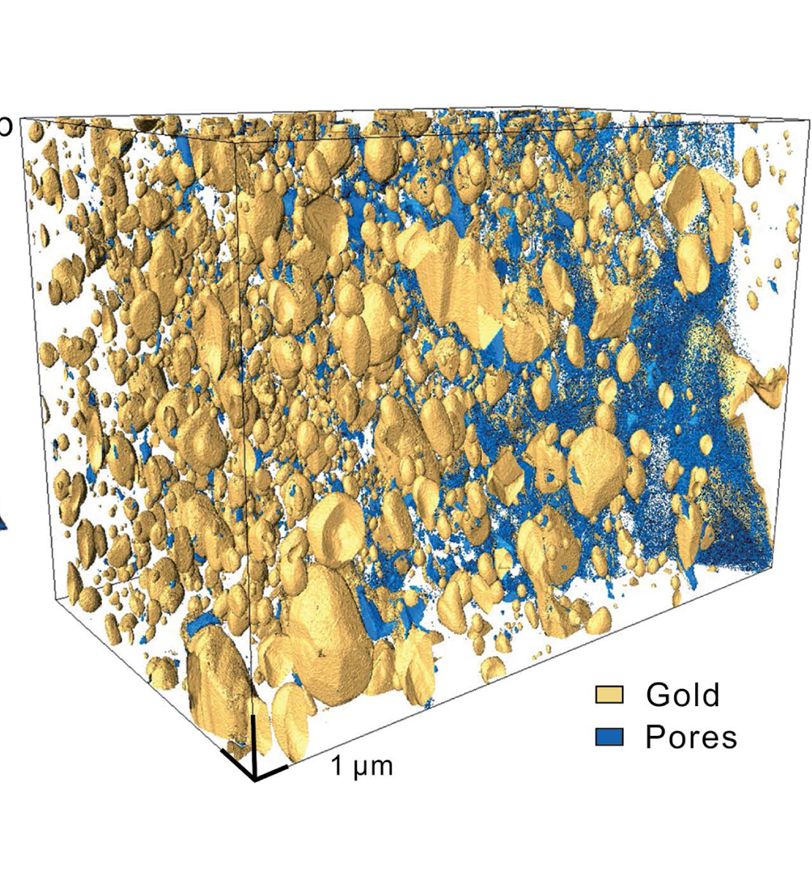
Recent studies have identified gold nanoparticles in ores in a range of deposit types, but little is known about their formation processes. In this contribution, gold-bearing magnetite from the well-documented, world-class Beiya Au deposit, China, was investigated in terms of microstructure and crystallography at the nanoscale. We present the first three-dimensional (3D) focused ion beam/scanning electron microscopy (FIB/SEM) tomography of the distribution of gold nanoparticles in nanopores i... Read more
Haoyang Zhou, Richard Wirth, Sarah A. Gleeson, Anja Schreiber, Sathish Mayanna
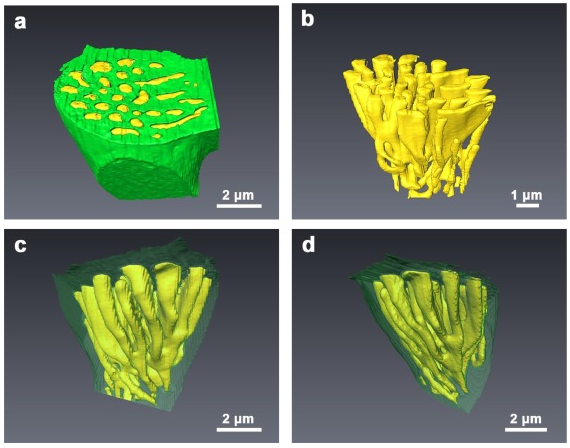
A combination of 3D tomography techniques provides direct evidence that links the phase assemblage to the bio-corrosion behaviour of a magnesium-zinc-calcium (Mg-Zn-Ca) alloy. The true shape, connectivity and volume fraction of the components have been determined using focused ion beam (FIB) tomography. The mechanism of the effect of the components with different morphologies on biodegradation was studied with the help of FIB. Micro X-ray CT (MicroCT) was used to investigate the degradation o... Read more
Y.Lu, R.G.Ding, Y.L.Chiu, I.P.Jones

Growing popularity and rapid development of Solid Oxide Fuel Cells (SOFCs) stem for their potential to become a gamechanger in the field of clean power generation technologies.
In this paper, a transient microstructure-oriented numerical simulation of a planar Direct Internal Reforming Solid Oxide Fuel Cell (DIR-SOFC) is delivered. The performance criteria in a direct steam reforming for a fuel starvation scenario are analyzed in order to optimize the underlying process. The proposed t... Read more
Maciej Chalusiak, Michal Wrobel, Marcin Mozdzierz, Katarzyna Berent, Janusz S. Szmyd, Shinji Kimijima, Grzegorz Brus
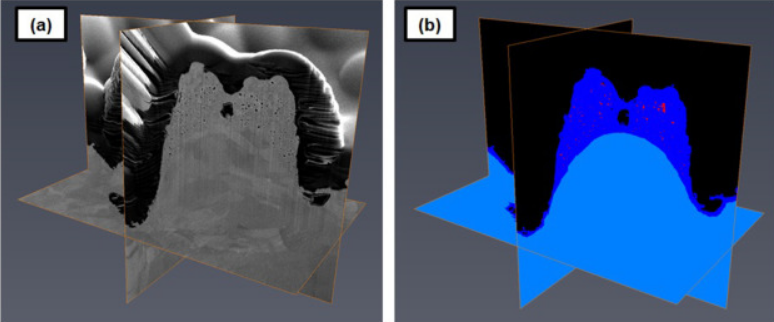
Laser processing of metal surfaces by ultrafast Read more
Edwin Peng, Alexander Roth, Craig A. Zuhlke, Soodabeh Azadehranjbar, Dennis R. Alexander, George Gogos, Jeffrey E. Shield
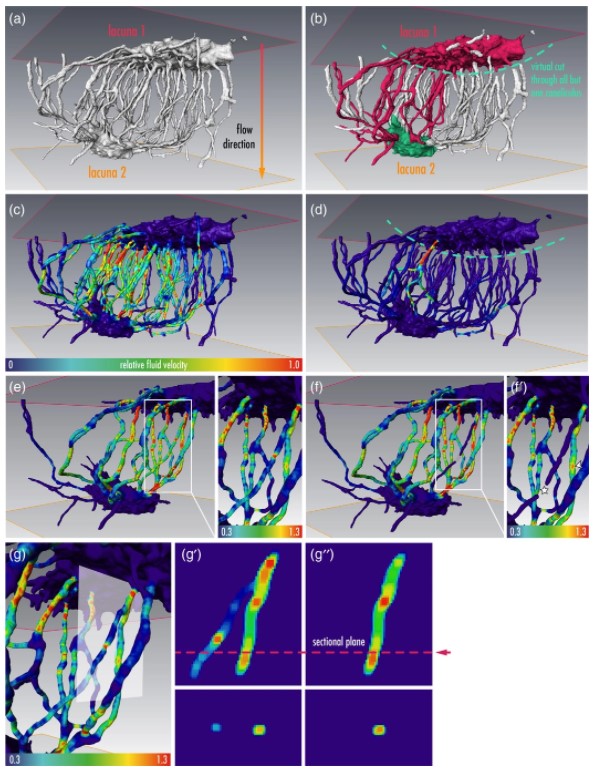
Osteocytes are the most frequent bone cells connected with each other through cell processes within tiny tubular-shaped canaliculi. The so-called osteocyte lacunar-canalicular network (LCN) plays a crucial role in bone remodeling and mineral homeostasis. Given the critical nature of these functions, it is herein hypothesized that the LCN must be structurally “overengineered” to provide network resilience.
This hypothesis is tested by characterizing canalicular networks in human bon... Read more
Emely Bortel, Liam M Grover, Neil Eisenstein, Christian Seim, Heikki Suhonen, Alexandra Pacureanu, Peter Westenberger, Kay Raum, Max Langer, Francoise Peyrin, Owen Addison, Bernhard Hesse

Regional Aneurysm Wall Enhancement is Affected by Local Hemodynamics: A 7T MRI Study
Aneurysm wall enhancement has been proposed as a biomarker for inflammation and instability. However, the mechanisms of aneurysm wall enhancement remain unclear. We used 7T MR imaging to determine the effect of flow in different regions of the wall.
Twenty-three intracranial aneurysms imaged with 7T MR imaging and 3D angiography were studied with computational fluid dynamics. Local flow conditions were compared between aneurysm wall enhancement and nonenhanced regions. Aneurysm wall en... Read more
S. Hadad, F. Mut, B.J. Chung, J.A. Roa, A.M. Robertson, D.M. Hasan, E.A. Samaniego and J.R. Cebral
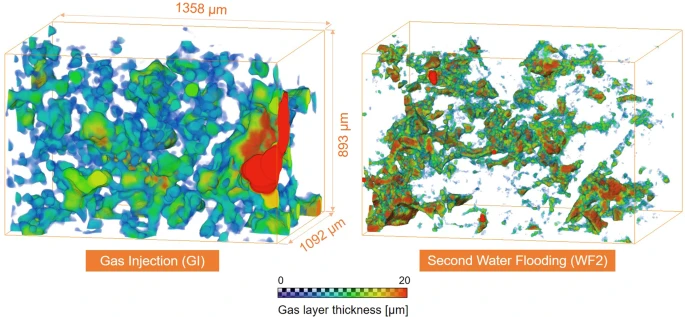
Pore-scale mechanisms of CO2 storage in oilfields
Rapid implementation of global scale carbon capture and storage is required to limit temperature rises to 1.5 °C this century. Depleted oilfields provide an immediate option for storage, since injection infrastructure is in place and there is an economic benefit from enhanced oil recovery. To design secure storage, we need to understand how the fluids are configured in the microscopic pore spaces of the reservoir rock. We use high-resolution X-ray imaging to study the flow of oil, water and ... Read more
Abdulla Alhosani, Alessio Scanziani, Qingyang Lin, Ali Q. Raeini, Branko Bijeljic & Martin J. Blunt
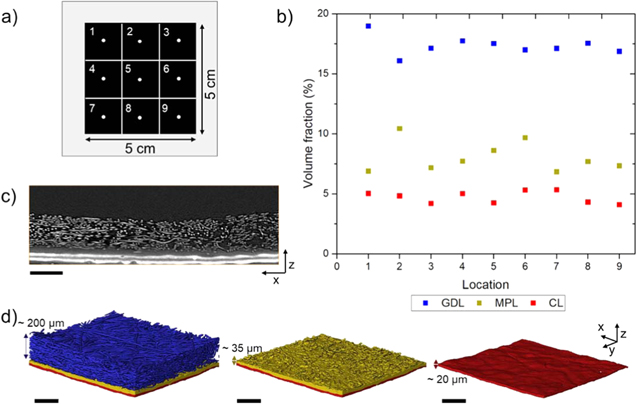
With the growing use of X-ray computed tomography (X-ray CT) datasets for modelling of transport properties, comes the need to define the representative elementary volume (REV) if considering three dimensions or the representative elementary area (REA) if considering two dimensions. The resolution used for imaging must be suited to the features of interest in the sample and the region-of-interest must be sufficiently large to capture key information. Polymer electrolyte fuel cells have a hier... Read more
Jennifer Hack et al 2020 J. Electrochem.
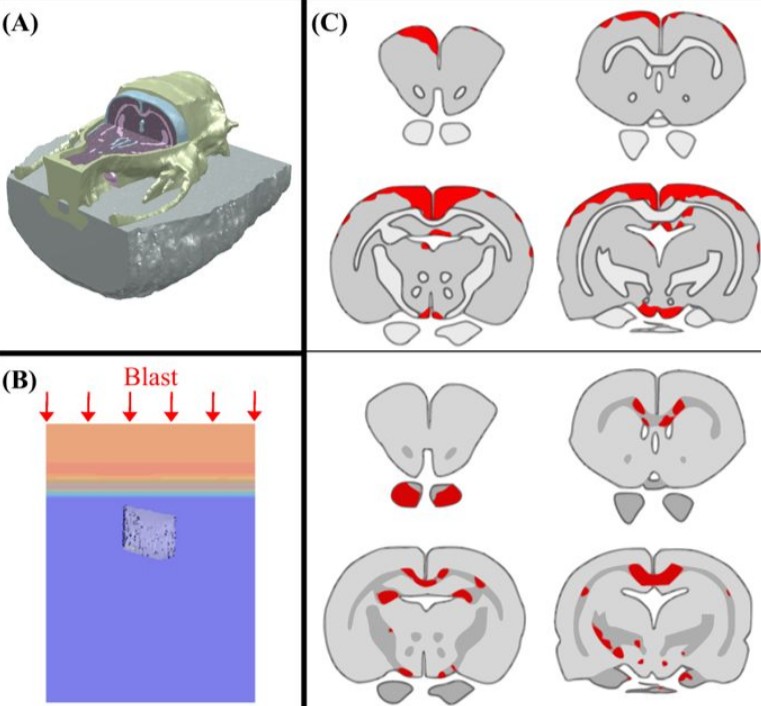
Cognition based bTBI mechanistic criteria; a tool for preventive and therapeutic innovations
Blast-induced traumatic brain injury has been associated with neurodegenerative and neuropsychiatric disorders. To date, although damage due to oxidative stress appears to be important, the specific mechanistic causes of such disorders remain elusive. Here, to determine the mechanical variables governing the tissue damage eventually cascading into cognitive deficits, we performed a study on the mechanics of rat brain under blast conditions. To this end, experiments were carried out to analyse... Read more
Daniel Garcia-Gonzalez, Nicholas S. Race, Natalie L. Voets, Damian R. Jenkins, Stamatios N. Sotiropoulos, Glen Acosta, Marcela Cruz-Haces, Jonathan Tang, Riyi Shi & Antoine Jérusalem
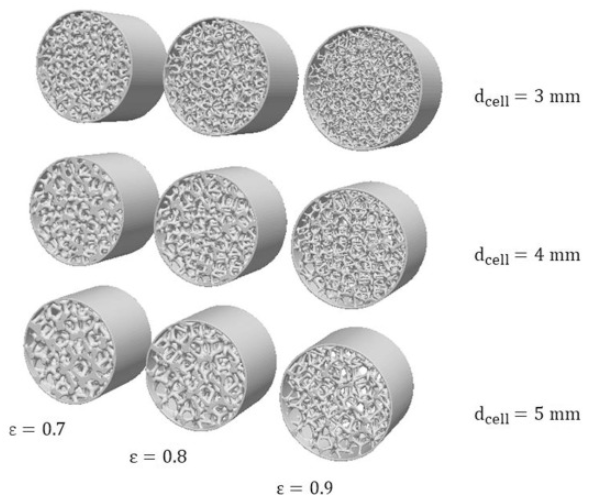
Open-cell foams as structured catalyst supports are promising candidates for the design of high throughput catalytic processes. In this contribution, we employ a coupled numerical and experimental approach to assess the pressure losses in foams. (…) we explore virtually-generated foam models and their 3D printed replicas for a combined CFD and experimental study of fluid dynamics in foams. In particular, we focus our analysis on the low Reynolds number regime, where deviations between t... Read more
Mauro Bracconi, Matteo Ambrosetti, Obinna Okafor, Victor Sans, Xun Zhang, Xiaoxia Ou, Claudio Pereira Da Fonte, Xiaolei Fan, Matteo Maestri, Gianpiero Groppi, Enrico Tronconi
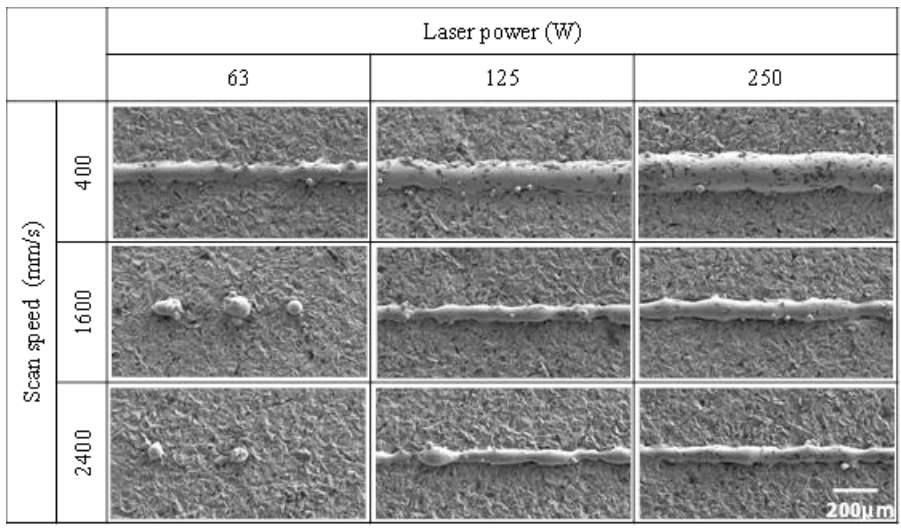
Two-fluid model to simulate metal powder bed fusion additive manufacturing
This paper reports our simulations of the metal powder fusion additive manufacturing process based on a two-fluid model. In simulations of metal behavior in which heat is applied by high-density energy sources (e.g., laser or electron beam), the aspects that need to be correctly modeled include boiling and evaporation, as well as melting and solidification. The potential of the two-fluid model to clarify numerous physical phenomena—deep penetration, plume generation, spatter generation due ... Read more
Noriko WATARI, Yuzuru OGURA, Noriko YAMAZAKI, Yukihiko INOUE, Keisuke KAMITANI, Yasuyuki FUJIYA, Masahiko TOYODA, Saneyuki GOYA, Toshiya WATANABE
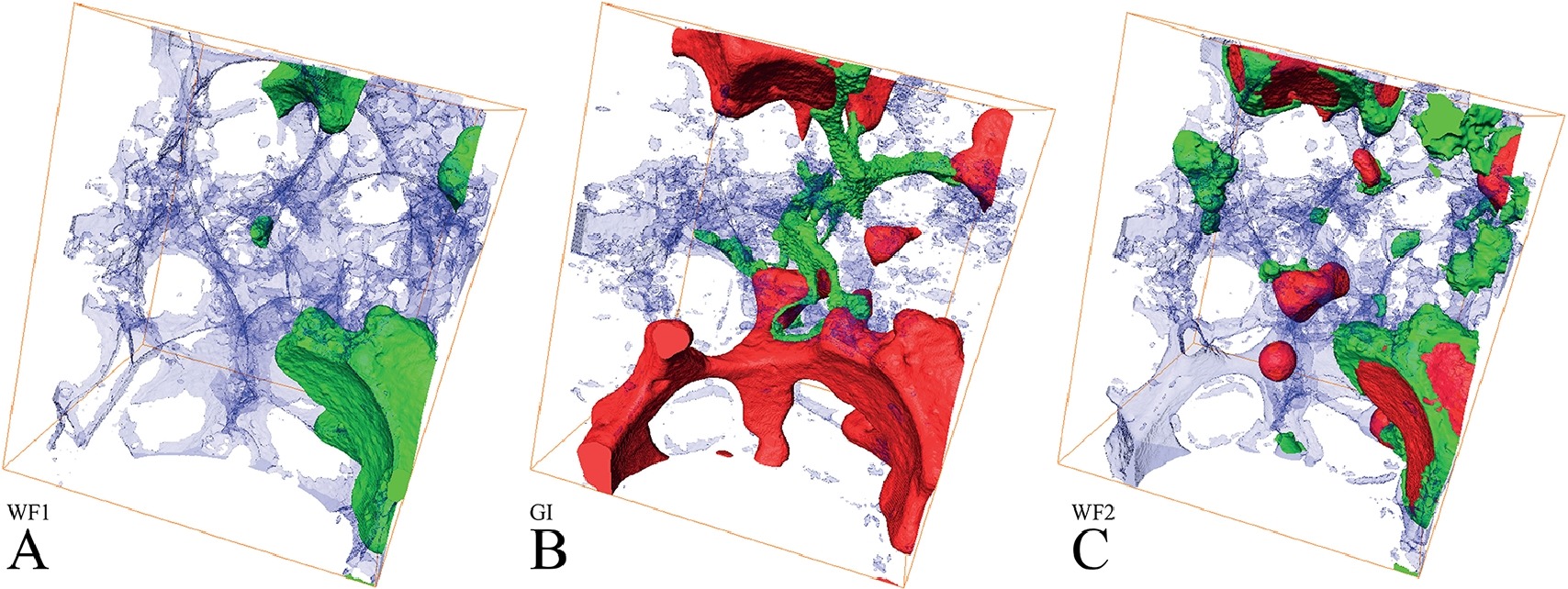
X-ray micro-tomography is used to image the pore-scale configurations of fluid in a rock saturated with three phases – brine, oil and gas – mimicking a subsurface reservoir, at high pressure and temperature. We determine pore occupancy during a displacement sequence that involves waterflooding, gas injection and water re-injection. In the water-wet sample considered, brine occupied the smallest pores, gas the biggest, while oil occupied pores of intermediate size and is displaced ... Read more
Alessio Scanziani, Kamaljit Singh, Tom Bultreys, Branko Bijeljic, Martin J. Blunt
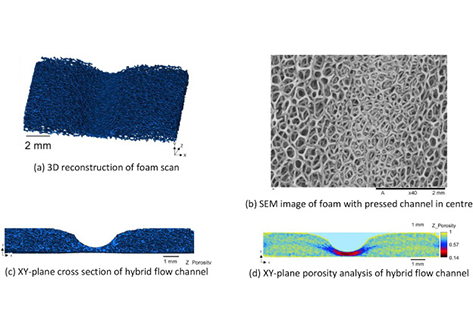
The flow distribution behaviour of open-cell metallic foam fuel cell flow-fields are evaluated using ex-situ optical analysis and X-ray computed tomography (X-ray CT). Five different manifold designs are evaluated and flow distribution and pressure drop ... Read more
A.Fly, D.Butcher, Q.Meyer, M.Whiteley, A.Spencer, C.Kim, P.R.Shearing, D.J.L.Brett, R.Chen
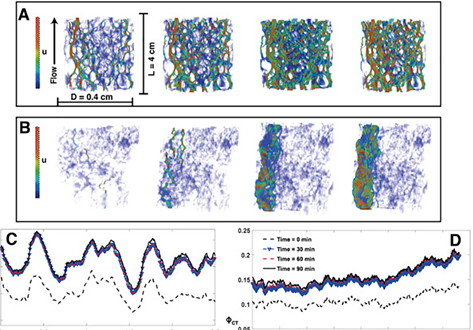
We have experimentally investigated the impact of heterogeneity on the dissolution of two limestones, characterised by distinct degrees of flow heterogeneity at both the pore and core scales. The two rocks were reacted with reservoir-condition CO2-saturated brine at both scales and scanned dynamically during dissolution. First, 1 cm long 4 mm... Read more
Menke H.P; Reynolds C.A.; Andrew M.G.; Pereira Nunes J.P.; Bijeljic B; Blunt M.J.
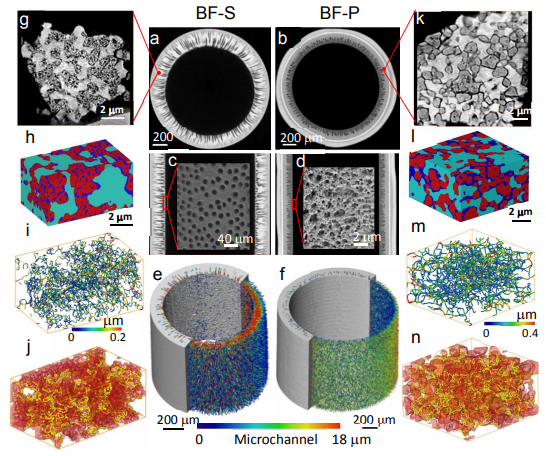
Mass transport can significantly limit the rate of reaction and lead to concentration polarization in electrochemical devices, especially under the conditions of high operating current density.
In this study we investigate hierarchically structured micro-tubular solid
oxide fuel cells (MT-SOFC) fabricated by phase inversion technique and quantitatively assess the mass transport and electrochemical performance improvement compared to a conventional tubular SOFC. We present pioneer... Read more
Xuekun Lu, Tao Li, Antonio Bertei, Jason I S Cho , Thomas M.M. Heenan , Rabuni Mohamad, Kang Li, Dan JL Brett, Paul R Shearing
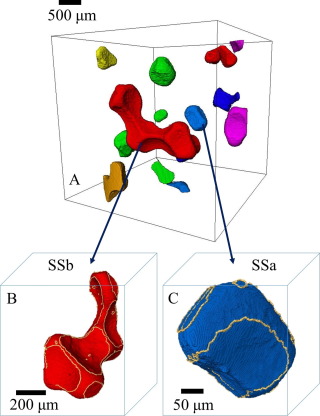
Multiphase flow in porous media is strongly influenced by the wettability of the system, which affects the arrangement of the interfaces of different phases residing in the pores.
We present a method for estimating the effective contact angle, which quantifies the wettability and controls the local capillary pressure within the complex pore space of natural rock samples, based on the physical constraint of constant curvature of the interface between two fluids. This algorithm is ... Read more
Alessio Scanziani, Kamaljit Singh, Martin J. Blunt, Alberto Guadagnini
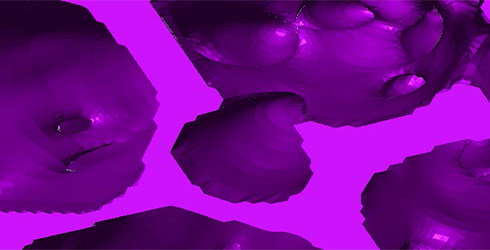
FAMU uses Avizo software to visualize and understand heat transfer and fluid flow
The CHEFF (Computational Heat Fluid Flow) Research group at Florida Agricultural & Mechanical University is using computational fluid dynamics to model flow and heat transfer in various engineering applications for industry, government and the private sector. The primary goal of this research is to first examine and then enhance the thermal performance of current and future low-density reticulated porous media, and explore their use as heat sinks in high power electronics (computer chips... Read more
CHEFF Research Group at Florida Agricultural & Mechanical University: Dr. G.D. Wesson, Professor of Chemical Engineering/Biological Agricultural Systems Engineering, Shawn Austin (Graduate student), Shari Briggs (Graduate student), Mellissa McCole (Graduate student), David Mosley (Graduate student)
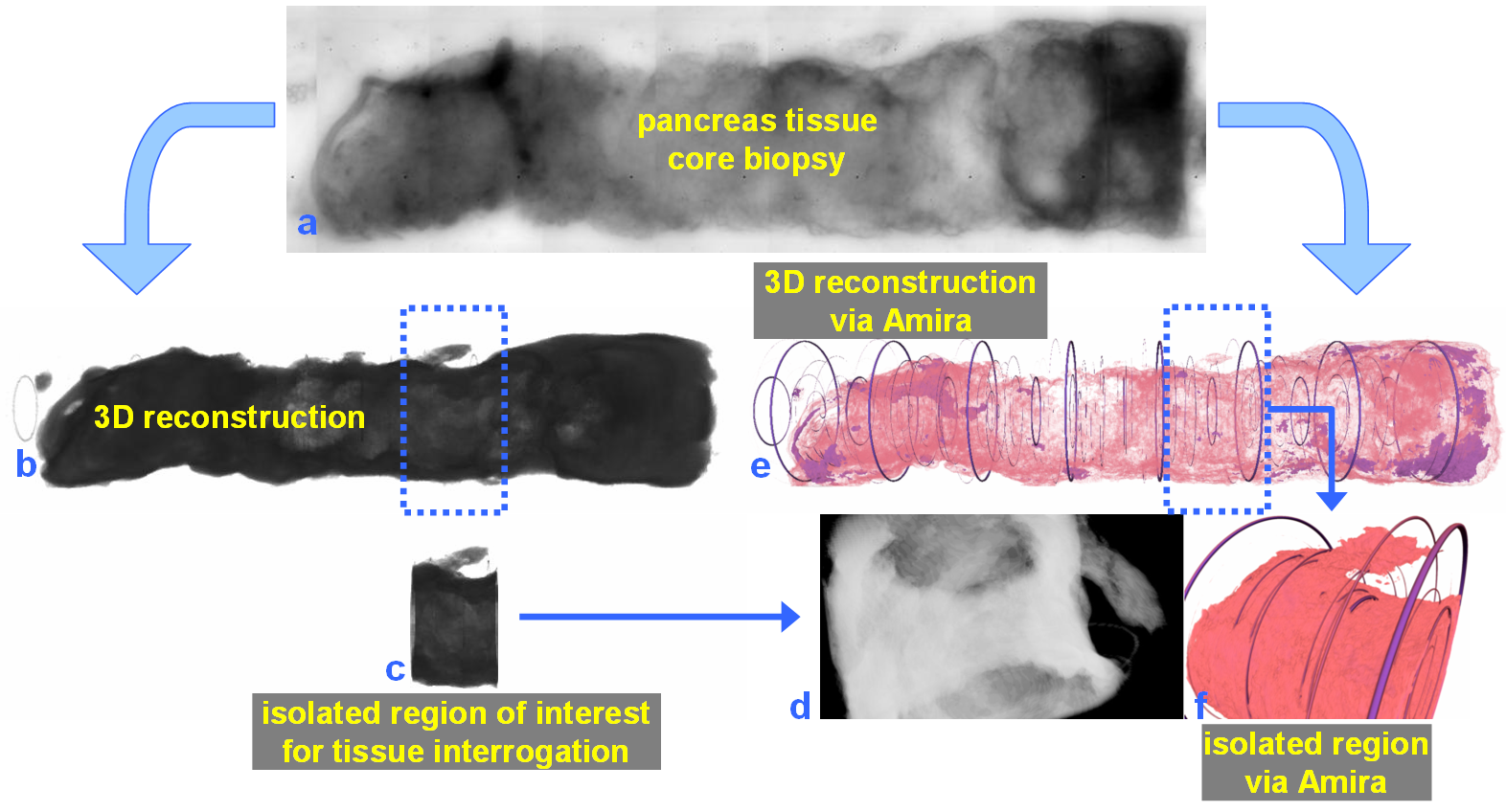
For nearly 100 years, pathology for cancer diagnosis has involved a standard, but complex series of steps to process tissue biopsies procured from a patient in the clinic. Many procedures are a direct result of the fact that observation and evaluation of specimens by pathologists occur using a standard microscope (in 2D).
In 2014, the Human Photonics Laboratory at the University of Washington demonstrated that the rudimentary operations of a pathology laboratory may be replicated on wh... Read more
Ronnie Das, PhD and Eric J. Seibel, PhD